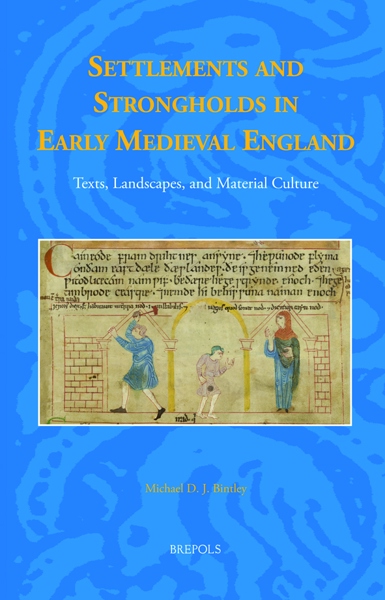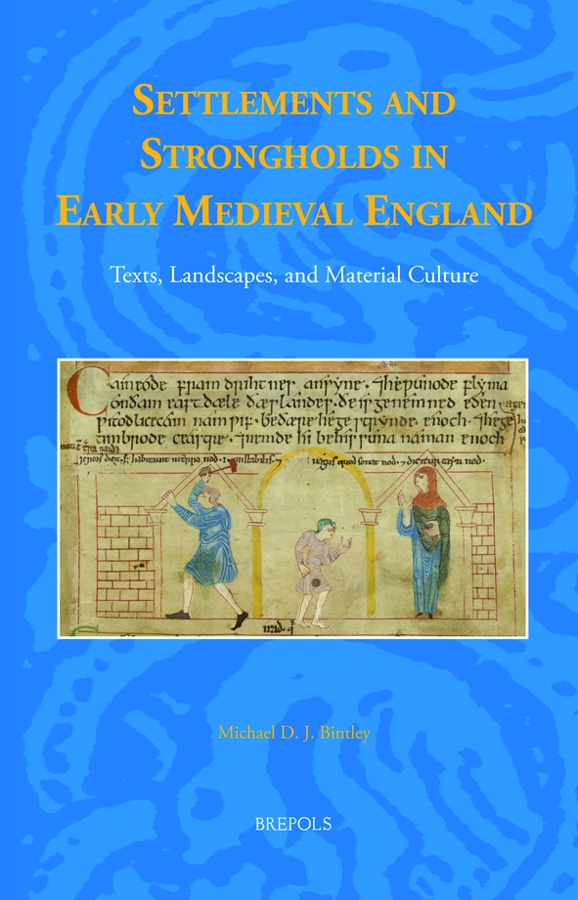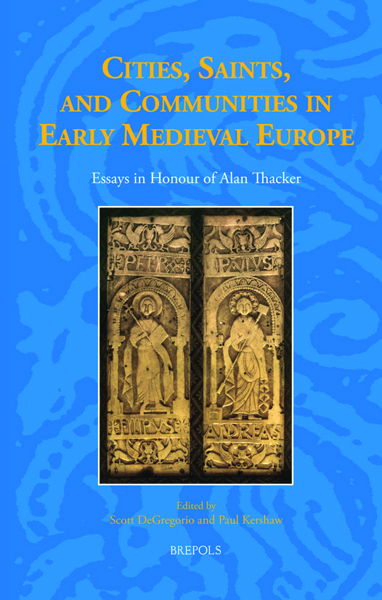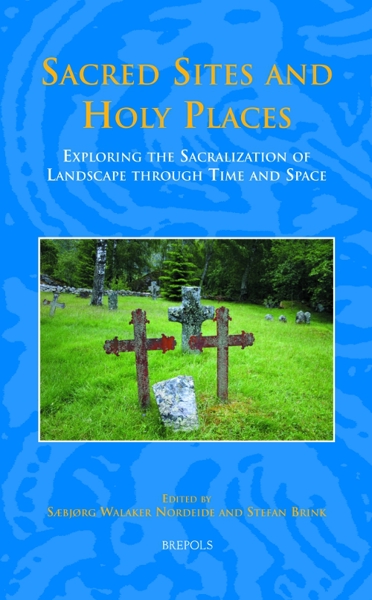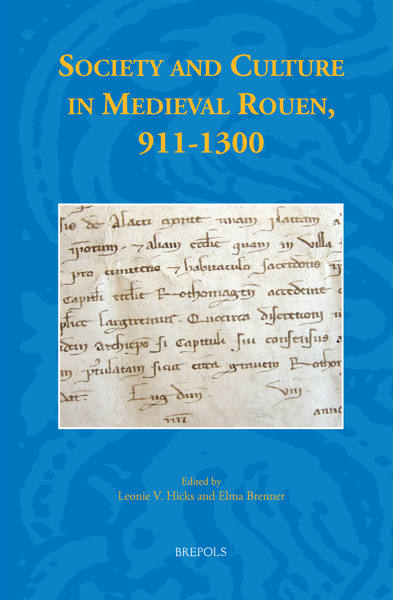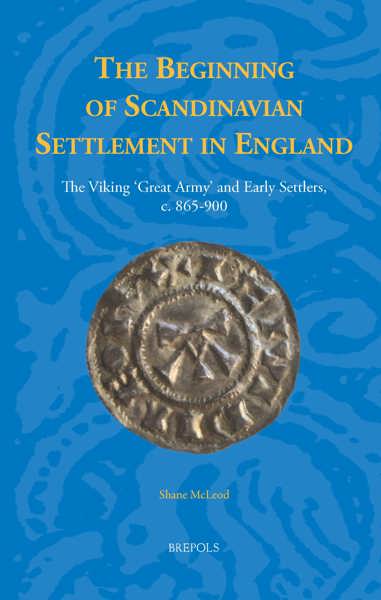
Settlements and Strongholds in Early Medieval England
Texts, Landscapes, and Material Culture
Michael Bintley
- Pages: 231 p.
- Size:156 x 234 mm
- Illustrations:13 b/w
- Language(s):English, Old English, Latin
- Publication Year:2020
- € 80,00 EXCL. VAT RETAIL PRICE
- ISBN: 978-2-503-58384-6
- Hardback
- Available
- € 80,00 EXCL. VAT RETAIL PRICE
- ISBN: 978-2-503-58385-3
- E-book
- Available
Awarded the 2021 The Beatrice White Prize for the best scholarly work noted in The Year’s Work in English Studies (YWES) in the fields of English Literature before 1590
The first interdisciplinary study of settlements and strongholds in early medieval England through their representation in literary and material culture.
“This well-produced six-chapter study, with appropriate illustrations (though some figures are so dark that what they illustrate is hard to discern), bibliography, and index, builds new relationships among key Old English historical and literary texts and contexts, both material and imaginative. Michael D. J. Bintley writes precisely and perceptively, and his latest book is an absorbing, demanding, and, in many cases, provocative investigation of the imaginative, cultural, and material framing of space and place in the Old English period (…) Bintley has built an immersive, impressive study from five centuries of human space-making in early medieval England, and, of equal consequence, he has constructed an hospitable edifice in which crucial conversations can continue.” (Sarah M. Anderson, in Speculum, 98/1, 2023, p. 223-224)
“(…) Bintley’s integration of archaeology and literary study in Settlements and Strongholds in Early Medieval England offers a rich and effective insights and a model of procedure that are greatly to be welcomed and commended.” (John Hines, in Journal of British Studies, 61/4, 2022, p. 999)
“Bintley models interdisciplinary methods that can be fruitfully adapted for further work. He reads early texts with sensitivity to historical, material, and literary contexts and greatly enriches our understanding of developments in structures and settlements in early medieval England.” (NICOLE GUENTHER DISCENZA, in Early Medieval Europe, 31/3, 2023, p. 497)
"this important study is one that deserves to be widely and closely read. By bringing the richness of the literary sources to bear on material culture, Bintley offers original insight into how early medieval communities perceived their world and encourages scholars to think and work holistically by demonstrating the value of a truly interdisciplinary approach", Duncan Wright, Medieval Archaeology
Michael Bintley is Lecturer in Early Medieval Literature and Culture at Birkbeck, University of London. His publications include Trees in the Religions of Early Medieval England (2015), and Andreas: an Edition, with Richard North (2016). He is co-editor of Trees and Timber in the Anglo-Saxon World (2013), Representing Beasts in Early Medieval England and Scandinavia (2015), Sensory Perception in the Medieval West (2016), Stasis in the Medieval West? Questioning Change and Continuity (2017), and Insular Iconographies: Essays in Honour of Jane Hawkes (2019).
In recent years numerous advances in archaeological and historical studies have enhanced our understanding of the form and function of settlements and strongholds in the landscapes of early medieval England. Until now, this groundbreaking work has not been matched in studies of early English literature, where no concerted effort has been made to investigate how these findings can inform our understanding of their representation in texts – and vice versa.
This study shows that literary works offer considerable insight into the ways their authors, readers, and other audiences thought and felt about the constructed places and spaces in which they lived their lives. Covering a broad range of evidence from the end of Roman rule to the Conquest, it is the first study of its kind to offer an interdisciplinary account of the relationship between the built environment as it appears in the material record, and in a range of textual productions.
Settlements and Strongholds interrogates correlations and disjunctions between the stories found in the soil and in written works of various kinds, focusing on vernacular texts and Latin works that informed their development. It argues for a deeper appreciation of the relationship between imaginative works and the material contexts in which they were created, revealing the parallel development of ideas and concepts that were fundamental in shaping early medieval England.
List of Illustrations
Acknowledgements
Abbreviations
Chapter 1. Introduction: Texts and Landscapes in Early Medieval England
- Texts
- Materials
- Contexts
Chapter 2. Ruin Mythologies
- The Desolation of Britain
- Origin Mythologies
- Roman Buildings in the Exeter Book Elegies
- Roman Buildings in Andreas
- Rural Settlements in Early-Saxon England
- Loci Amoeni in the Vernacular Tradition
- Conclusion
Chapter 3. Settlements Before the ‘Viking Age’
- Rebuilding Christendom in the Ruins of Rome
- Cosmic Halls in Beowulf and Cædmon’s Hymn
- Minster Authority: Cædmon in the Historia Ecclesiastica
- Building the English Church in De Templo
- Structuring the Everyday in the Exeter Book Elegies
- Wīcs in Old English Poetry?
- Burhs in Middle-Saxon England
- Conclusion
Chapter 4. Settlements, Strongholds, and the Alfredian Reinvention
- Reclaiming the Urban Landscape in Andreas
- The Archaeology of the Burghal Hidage Society, Settlements, and the ‘Alfredian’ Translations
- Society, Settlements, and Asser’s Vita Alfredi
- Conclusion
Chapter 5. Spiritual Strongholds in Late-Saxon England
- Bethulia as Burh in the Old English Judith
- Cities of Good and Evil in Elene, Juliana, and Daniel
- Ælfric, Wulfstan, and the Building of Christendom
- The Anglo-Norman City in Durham
- Conclusion
Chapter 6. Afterword
- Of Time and the City
- Earth, Wood, Stone
- Structures of Community
Index
